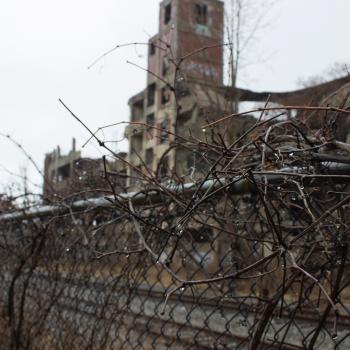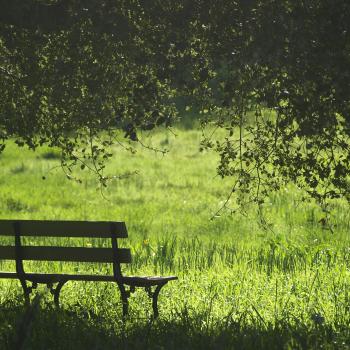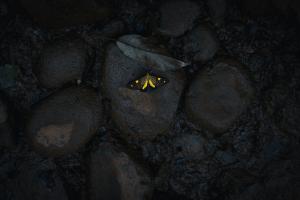 Don’t go to Emily Dickinson’s house in Amherst, Massachusetts. There isn’t anything there. Not her writing desk, not her books. Not her treasured items. Not her.
Don’t go to Emily Dickinson’s house in Amherst, Massachusetts. There isn’t anything there. Not her writing desk, not her books. Not her treasured items. Not her.
Emily Dickinson used the house in Amherst to hide from life. As she got older, Dickinson left the place less and less. Often, she refused even to greet visitors. She’d lock herself inside her room. There, she wrote letters and she wrote her poems.
And then, in 1886, Dickinson died. She left behind thousands of unpublished poems. They are strange poems for all their accessibility, and beloved by people everywhere. Her poems went out into the world in a way Emily Dickinson never could.
After her poems made her posthumously famous, Dickinson’s readers began to long for the presence of Emily Dickinson herself. People go to Dickinson’s house in Amherst to make some connection between the poems and the person. The house seems to be the key. The place where she dwelt in silence and solitary confinement would seem to hold secret clues.
But Emily was cleverer than that. She didn’t erase herself so completely in life simply to be dredged up by every clumsy tourist who stumbles through her house in Amherst 130 years later.
Even when she was alive it could be hard to find her in that house. Who was that flittering by at the top of the steps in a white gown? Could it have been Emily? No, her sister might say, that couldn’t have been Emily. She is sick today, not receiving visitors.
Emily Dickinson is still playing those same kinds of tricks today. Do you catch a glimpse of Emily in the downstairs parlor? Do you get a sense of her as you stand in her bedroom looking out of the window at the street below? You can tell yourself you do. Plenty of tourists pretend, daily, that they’ve learned something about Emily Dickinson by visiting her house. Plenty of people lie to themselves about the good time they’ve had. In reality, all they’ve experienced is a frustrating glimpse into emptiness.
The greatness of Emily Dickinson is in how seriously she took this disappearing act. It wasn’t fun for her, exactly. But it was necessary. Here’s what she wrote in “Behind Me Dips Eternity”:
Behind Me—dips Eternity—
Before Me—Immortality—
Myself—the Term between—
Death but the Drift of Eastern Gray
If Emily Dickinson is hiding anywhere, she is hiding in that dash, the one between “myself” and “the term between.” Another way to say the same thing is to say that “the term between” is the dash and therefore the dash is the self. Dickinson, in short, liked to see herself as a dash, a momentary interruption of the ceaseless flow of eternity behind and before.
“I like Emily Dickinson’s dashes.” That’s what Alfred Kazin said in his 1961 essay, “Emily Dickinson: Called Back.” I like Dickinson’s dashes too. But it is a scary thought, the idea that a person can be reduced to a dash. Kazin wrote that Dickinson “gave as her primary reason for writing poetry—‘I had a terror—since September—I could tell to none—and so I sing, as the Boy does by the Burying Grounds—because I am afraid.’”
The fear is essential. The man or woman who dares to look into the eternal without trembling isn’t doing it right. Emily Dickinson’s poetry, then, is her sustained attempt to find a language and syntax for thoughts that linger at the Burying Grounds. In becoming a dash, Dickinson was finding a way to be erased by the Absolute, who she sometimes called God.
There is a paradox there, of course. In writing about death and absence, Emily Dickinson found her subjective, personal voice. Her poems are uniquely her own. They are often strangely funny. Dickinson braces herself with wit and irony in famous poems like “Because I could not stop for Death.”
Because I could not stop for Death—
He kindly stopped for me—
The Carriage held but just Ourselves—
And Immortality.
These are terribly clever lines. This is Dickinson’s particular form of dark humor. It is how we know Emily as Emily. But the thinking in the lines is so “ironically demure,” as Kazin puts it, that the poem “remains enigmatic.” Emily Dickinson’s wittiness is like the final exhale of subjectivity before that subjectivity dissipates into the ether. Dickinson’s unique voice seeks to annihilate itself. Later in the poem, Dickinson writes that:
We paused before a House that seemed
A Swelling of the Ground—
The Roof was scarcely visible—
The Cornice—in the Ground—
From the perspective of death, every house, every human dwelling is but a brief “swelling of the ground.” Every house is already “in the ground.” Every person is, too.
In her house in Amherst, Emily Dickinson developed her own special relationship with death. She learned to die so well that there is nothing left of her. Except the poems, which have turned out, oddly and ironically, to be eternal.
Morgan Meis is the critic-at-large for The Smart Set (thesmartset.com). He has a PhD in Philosophy and has written for n+1, The Believer, Harper’s Magazine, and The Virginia Quarterly Review. He won the Whiting Award in 2013. Morgan is also an editor at 3 Quarks Daily, and a winner of a Creative Capital | Warhol Foundation Arts Writers grant. A book of Morgan’s selected essays can be found here. He can be reached at [email protected].











